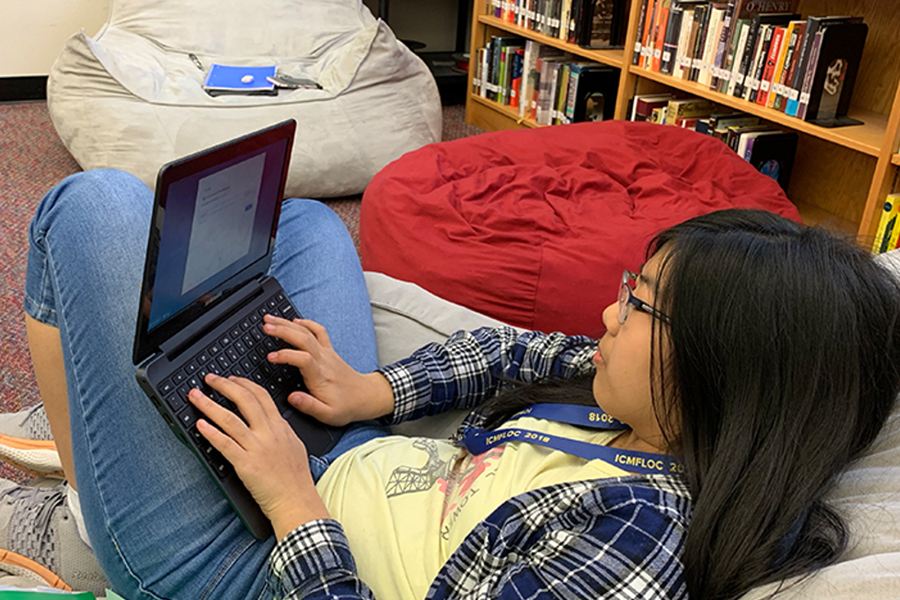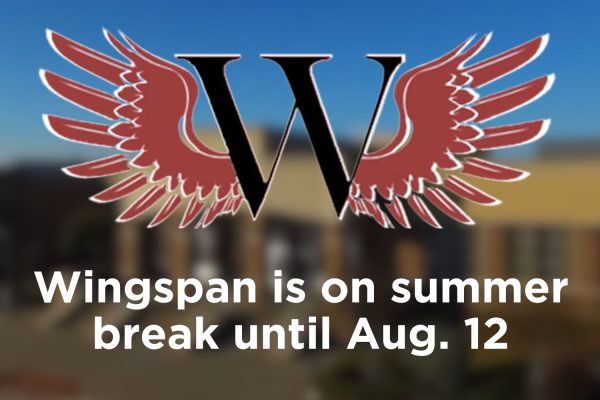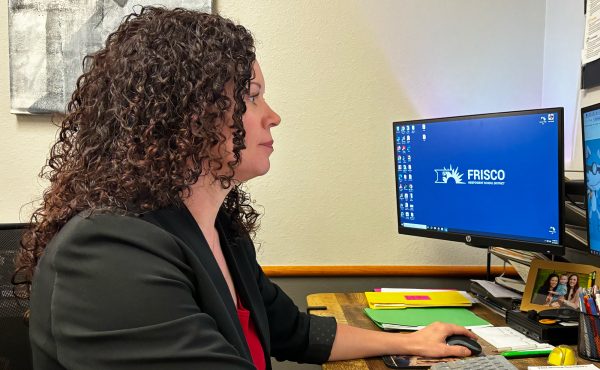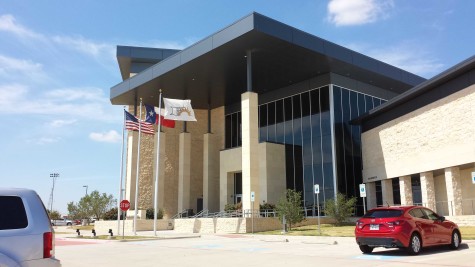Students and staff adjusting to eLearning
Whether it’s on school related device such as the Chromebook being used by freshman Emily Gong working in the library back in December, or a student’s own personal device, the Frisco ISD eLearning system launched on Tuesday with students and staff adjusting to the new way of school from home.
The first day of eLearning began Tuesday and it was an adjustment for the students and staff who are used to face-to-face interactions. For AP Environmental Science teacher, Jamie Berendt, this situation brought on her own comments and questions.
I, for one, try to make my course very interactive and full of discussion and activities. This is a little harder when done virtually,
— AP Environmental Science teacher Jamie Berendt
“I think eLearning is a good idea to keep the ball rolling on learning and finishing the year, plus I think everyone needs a distraction right now, so this definitely helps,” AP Environmental Science teacher Jamie Berendt said. “The distraction is probably the best benefit in these anxious times and with the way we are collaborating online it gives everyone a chance to connect with their classmates. The virtual hours with students through zoom is also a way to see faces, reconnect, and not just ask questions about school work but to check up on one another and have a laugh or two.”
Keeping an open mind to the situation, switching from in-class learning to online education does bring some challenges, but not all of those challenges are negative.
“I, for one, try to make my course very interactive and full of discussion and activities,” Berendt said. “This is a little harder when done virtually. It’s not impossible but it’s for sure less than what it would have been. But on the other hand, this really forces me to step outside my comfort zone and get creative with my lessons.”
As for students, it can be an isolating time as there’s no daily interaction with your classmates and peers that has been normal for many years of our life. However student body president Emma Hancock hopes Student Council can find a way to help.
“I would certainly want all students to be engaged in their work through eLearning, Hancock said. “Sadly, being away from school has drastically changed the dynamic of Student Council, but we are hopeful to continue to encourage, engage, and uplift the student body through social media and other internet platforms.”
Along with Hancock, StuCo vice president Rileigh Horcher are working on ways to keep the student body engaged, such as continuing their weekly infographics and news updates on their Instagram.
“We can use our social media and other resources to make sure our student population is staying active both in their learning and in their health, while also making sure people are still talking to friends and staying positive,” Horcher said. “We all have to stick together and stay encouraging and uplifting during this time.”
For senior artist and student Megan Weidenbach, this whole transition has been a bit more of a challenge than most, with art being something that doesn’t transfer to “online learning” quite as well.
“As someone who takes only fine arts courses on campus, I’m a bit concerned how that will progress,” Weidnebach said. “I still have a bunch of projects up at school, so I’m hoping this will all be over soon so I can get back to work.”
I think the biggest issue surrounding eLearning would be accommodating students who require additional help in the classroom,
— senior Megan Weidenbach
However, Weidenbach understands that in such an unpredictable and confusing time, it’s the best that can be done given the situation.
“I think it’s a great alternative for the general population of students. Although it’s not ideal, it’s the best we can do in these circumstances,” Weidenbach said. “I think the biggest issue surrounding eLearning would be accommodating students who require additional help in the classroom. Those who rely more on instructors may have a hard time adjusting to this new way of learning. I can only hope that teachers and administrators have taken this into deep consideration as we move forward.”

Amelia Jáuregui is a senior and is partaking in her first year in the Wingspan Program. Amelia is also the Best Buddies Chapter President and the President...

Kasey is entering her fourth year in Wingspan as a senior. She spends her free time driving to god knows where with her windows down and music blasting...








